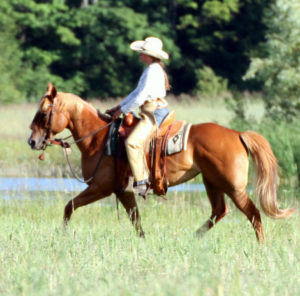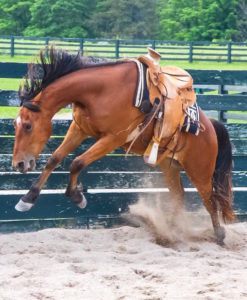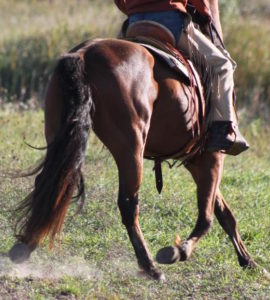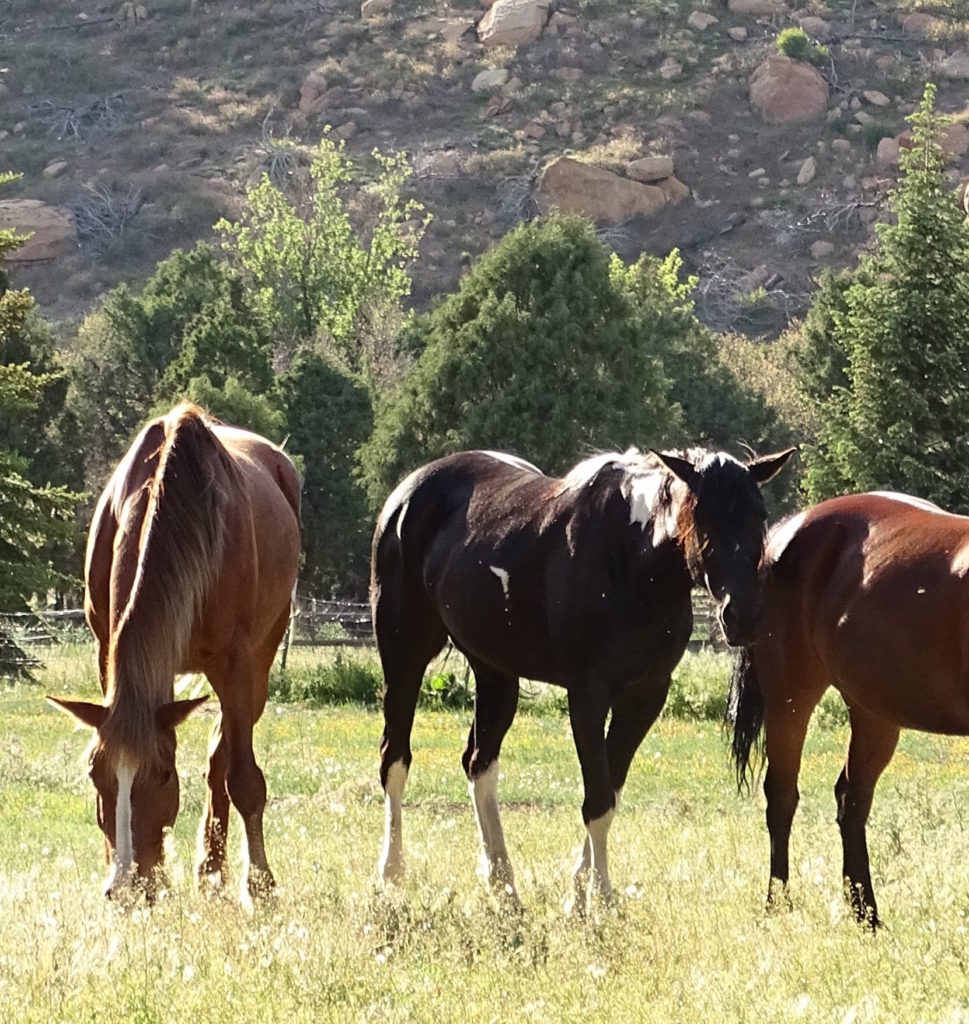Editor’s Note: Amy Skinner is a regular guest columnist and has been a horse gal since age six. She works with owner/operator Jim Thomas as a trainer at Bar T Horsemanship where she rides and teaches English and Western. She also maintains Essence Horsemanship. Skinner has studied at the Royal Andalusian School of Equestrian Art in Spain, with Buck  Brannaman, Leslie Desmond, Brent Graef, and many others.
Brannaman, Leslie Desmond, Brent Graef, and many others.
Meet Skinner and Thomas at the Best Horse Practices Summit!
Here, Skinner shares some notes on starting young horses.
She writes:
Starting a horse is about providing a good foundation for the rest of its life. To help prepare it, I want to make sure it’s exposed to as much as possible and to instill confidence and curiosity at a young age. I can’t prepare it for everything it will encounter, but if I can get a good mix of curiosity and confidence overall, the colt will have what it needs to tackle new obstacles.
The Challenges
Whether it’s a future dressage horse, jumper, cutting horse, or trail horse, I believe every young horse should know how to:
- walk, trot, and canter on a loose rein
- ride out alone and with friends on the trail
- move a cow

All part of the process. A young horse learns the feel of a saddle
When a young horse is getting started, it can overwhelmed with new information quickly. It has to learn to:
- carry a saddle,
- wear a bridle and bit
- carry a rider
It has to learn to interpret the scary, funny feeling in its mouth when the rider tries to direct it. And it needs to do this while managing the rider’s moving weight on its back. It has to handle being exposed to new and scary things: different places, obstacles, scary corners in the arena, cows, and more.
I hope to provide the horse with plenty of information for it to digest and to learn in a productive and confidence-boosting way. Starting, no matter how well you go about it, can be stressful on a horse. Young horses are still learning to balance themselves and you’ll often see them move in silly, awkward ways. Their bodies aren’t fully developed and they can experience fear or concern while carrying the extra weight of a rider.
Providing Advantages or Dealing with Handicaps
 Horses raised outside in a healthy herd dynamic and exposed to varied terrain and diverse situations are invariably easier to start. These horses have a better sense of balance and a better awareness of their surroundings. This is a totally natural development for a horse.
Horses raised outside in a healthy herd dynamic and exposed to varied terrain and diverse situations are invariably easier to start. These horses have a better sense of balance and a better awareness of their surroundings. This is a totally natural development for a horse.
Unfortunately, many young horses are born in stalls, brought into stalls daily, and spend most of their time in small, groomed pens or sterile arenas with flat and soft footing. This scenario offers the young horse no advantages. I’ve found these horses to be more nervous and less capable than a young horse raised outside in a more natural environment.
Horses raised in ‘positively unpredictable’ environments are also quicker learners, as they have had to adapt faster and learn to trust their instincts. Stall-raised young horses are often shielded from unpleasant stimuli and never have to adapt to survive. While learning to tolerate fly-spraying and blanketing may have some small benefits, humans take the more crucial adaptive abilities away from these horses, making them worse off.
If you want to have a super learner, an athlete, and a brave and curious horse, do him the favor of being outside without interference.
- Let him deal with herd members, bugs, wind, hills, and rain.
- Let him manage around the holes in the pasture. Horses and holes have evolved together over millennia and horses have not been wiped out yet because of them.
‘Going natural’ like this will not only make him healthier, happier, and more mentally balanced, it will make him a better learner and better athlete too.

Amen! and science backs you up. Good points in a nice article.